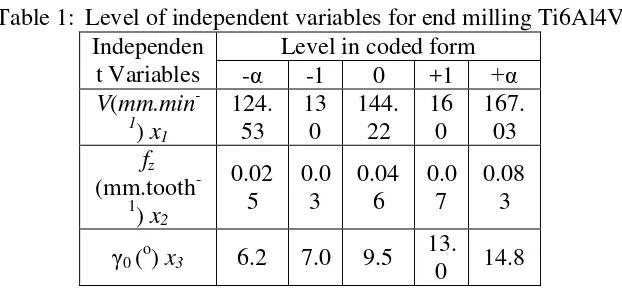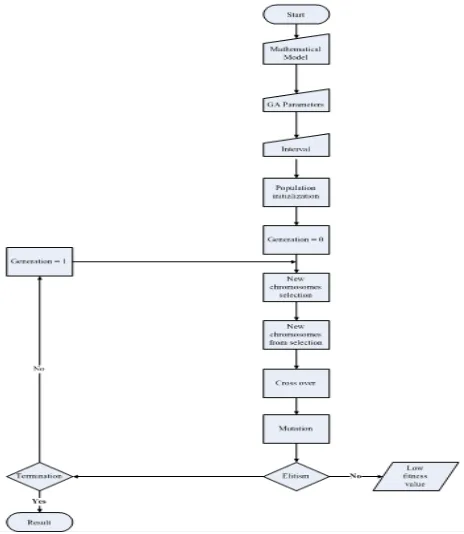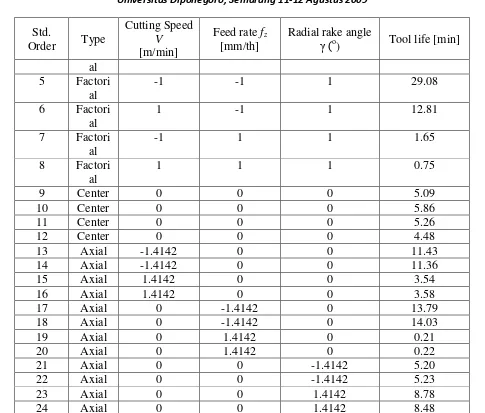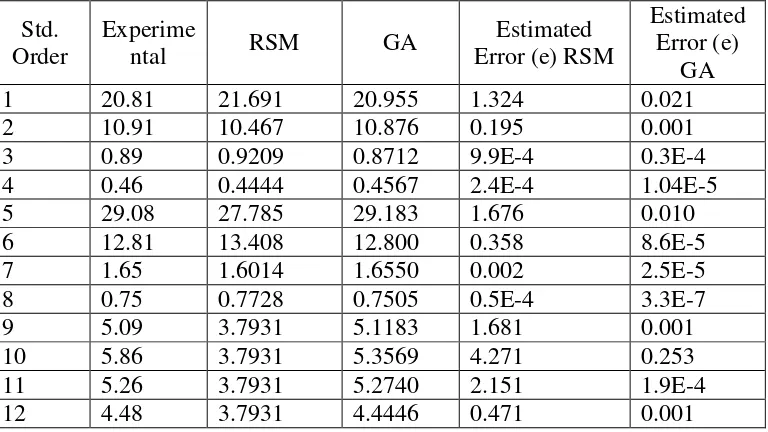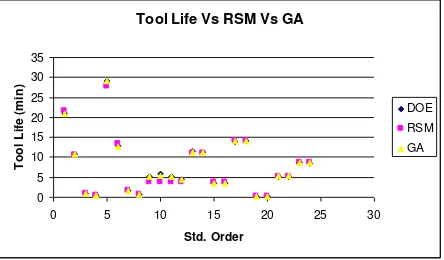Hotel Santika Premiere Semarang
11-14 Agustus 2009
Penyelenggara:
Jurusan Teknik Mesin
Fakultas Teknik Universitas Diponegoro
www.mesin.ft.undip.ac.id
S
EMINAR
N
ASIONAL
T
AHUNAN
T
EKNIK
M
ESIN
-
VIII
ISBN
978-979-704-772-6
S
EMINAR
N
ASIONAL
T
AHUNAN
T
EKNIK
M
ESIN
–
VIII
SNTTM
–
VIII
Semarang, 11-14 Agustus 2009
Digital Prosiding
Jurusan Teknik Mesin
S
EMINAR
N
ASIONAL
T
AHUNAN
T
EKNIK
M
ESIN
(SNTTM)
–
VIII
Hotel Santika Premiere Semarang, 11-14 Agustus 2009
Untuk segala pertanyaan mengenai makalah SNTTM VIII silahkan hubungi:
Sekretariat SNTTM VIII
Jurusan Teknik Mesin
Fakultas Teknik Universitas Diponegoro
Jl. Prof. Sudarto, Kampus Tembalang
Semarang, Jawa Tengah, Indonesia 50275
Phone: 024-7460059
Email: makalah.snttm8@gmail.com
Website: www.mesin-undip.info/snttm8
Editor:
Joga Dharma Setiawan, PhD
Rusnaldy, ST, MT, PhD
Dr. Jamari, ST, MT
Asisten Editor:
M. Tauviqirrahman, ST, MT
Paryanto, ST.
Fadely Padiyatu
Farika Tono Putri
Heru Purnomo
ISBN: 978-979-704-772-6
i
S
EMINARN
ASIONALT
AHUNANT
EKNIKM
ESIN(SNTTM)
–
VIII
Universitas Diponegoro, Semarang, 11-14 Agustus 2009
KATA PENGANTAR
Selamat datang di Kota Semarang dalam rangka musyawarah dan seminar !
Dengan jumlah paper yang masuk ke panitia Seminar Nasional Tahunan Teknik
Mesin (SNTTM) - VIII yang mencapai 185 makalah, kami panitia merasa cukup
berbangga dan mengucapkan banyak terima kasih kepada seluruh partisipan.
Kami juga mengucapkan terima kasih kepada seluruh pihak yang telah ikut
mendukung sehingga seminar ini dapat terlaksana.
Semoga tema yang ditetapkan pada Musyawarah BKSTM dan SNTTM kali ini yaitu
Meningkatkan kontribusi Jurusan Teknik Mesin bagi perkembangan industri di
tanah air
dapat terwujud dan
di tahun mendatang acara ini semakin
berkembang.
Kami mengharapkan semoga semua peserta dari seluruh Indonesia dapat
menikmati seluruh rangkaian acara musyawarah BKSTM dan SNTTM kali ini.
Selamat bermusyawarah dan ber-SNTTM.
Ketua panitia
ii
S
EMINARN
ASIONALT
AHUNANT
EKNIKM
ESIN(SNTTM)
–
VIII
Universitas Diponegoro, Semarang, 11-14 Agustus 2009
PANITIA PELAKSANA
Ketua Pelaksana:
Rusnaldy, ST, MT, PhD
Wakil Ketua Pelaksana/Bendahara:
M.S.K. Tony Suryo Utomo, ST, MT, PhD
Makalah dan Website:
Joga Dharma Setiawan, PhD
Paryanto, ST
Acara:
Dr.-Ing. Ir. Ismoyo Haryanto, MT
Dr. Jamari, ST, MT
Perlengkapan:
Dr. Sri Nugroho , ST, MT
Sponsorship:
Muchammad, ST, MT
Norman Iskandar, ST
Akomodasi & Transportasi:
Rifky Ismail, ST, MT
Wisata:
Ir. Eflita Yohana, MT
Gunawan Dwi Haryadi, ST, MT
Seminar Kit:
M. Tauviqirrahman, ST, MT
Tina Nurmala, SS
Anggota:
iii
S
EMINARN
ASIONALT
AHUNANT
EKNIKM
ESIN(SNTTM)
–
VIII
Universitas Diponegoro, Semarang, 11-14 Agustus 2009
DEWAN PENGARAH
Ir. Sri Eko Wahyuni, MS
Dr. Dipl.Ing. Ir. Berkah Fajar T
Ir. Bambang Yunianto, MSc
Ir. Dwi Basuki Wibowo, MS
Dr. Ir. Toni Prahasto, MASc
Dr. Ir. A.P. Bayuseno, MSc
iv
S
EMINARN
ASIONALT
AHUNANT
EKNIKM
ESIN(SNTTM)
–
VIII
Universitas Diponegoro, Semarang, 11-14 Agustus 2009
UCAPAN TERIMAKASIH
Panitia SNTTM-VIII mengucapkan banyak terima kasih kepada pihak sponsor
PT. Indonesia Power Tambak Lorok
PT. PLN (Persero) Distribusi Jawa Tengah dan DIY
PT. Yudistira Energy
PT. PP (Pembangunan Perumahan)
Alumni Teknik Mesin UNDIP
Magister Teknik Mesin Program Pascasarjana UNDIP
PT. Parametrik Nusantara
PT. Pupuk Kalimantan Timur
PT. Badak NGL Bontang
v
DAFTAR ISI
KATA PENGANTAR
i
PANITIA PELAKSANA
ii
DEWAN PENGARAH
iii
UCAPAN TERIMAKASIH
iv
DAFTAR ISI
v
M1- MANUFAKTUR DAN SISTEM PRODUKSI
1
M1-001 Simulasi Numerik Modifikasi Slot Furnace Untuk Proses Post Weld Heat Treatment Pada Header Harp-Hrsg
Aditya Dena Kurniawan Dan Tri Agung Rohmat 2
M1-002 Bonding Logam – Electroceramic Dengan Menggunakan Teknologi Selective Laser Sintering
Zulkifli Amin 15
M1-003 Pengembangan Laser Trajectory Proses Rapid Prototyping Untuk Produk Berkontur Dan Prismatik
Gandjar Kiswanto, Ahmad Kholil 26
M1-004 Standard Operating Procedures (Sop) Pada Sistem Informasi Perakitan Kendaraan
Iman Riswandi, Yatna Yuwana Martawirya, Sri Raharno 46
M1-005 Identifikasi Fitur Kekasaran Permukaan Berbasis Vision Untuk Produk Hasil Pemesinan
Gandjar Kiswanto, Budi Haryanto, Gatot Eka Pramono 52 M1-006 Re-Layout Lantai Produksi Dengan Metode Ranked Positioftal Weigth
(Rpw)
vii
M1-017 Determination Of Brittleness Of Brittle Silicon In Micro-End-Milling Process
Rusnaldy, Tae Jo Ko and Hee Sool Kim 191
M1-018 Implementation Of Genetic Algorithm In Tool Life Optimization When End Milling Of Ti64 Using Tialn Coated Tools
A.S Mohruni, S. Sharif, M.Y. Noordin, Santo.P.S 199
M1-019 Studi Eksperimental Pengaruh Variasi Stand Of Distance Terhadap Gaya Potong Pada Proses Water Jet Machining
Suhardjono, M. Khoirul Effendi dan Zulfikar Rusdi F 207
M1-020 Analisis Kualitas Produk Shock Becker Motor Dengan Menggunakan Metode Quality Function Deployment (QFD) Dan Metode Analytical Hierarchy Process Di PT. XYZ, Tbk
Lukman Arhami 216
M1-021 Studi Pengaruh Strategi Pemesinan Terhadap Kekasaran Permukaan Pada Proses Pocketing Material ST 42 Febri Damayanti, Lisabella Novarina
Rudiono, Deby, Stefanus Wijaya, The Jaya Suteja 222
M1-022 Control Of Key Process Parameters For Improved Product Quality In Injection Molding Process
Bambang Pramujati 226
M2- DESAIN DAN PENDIDIKAN
238
M2-001 Rancang Bangun Push-Belt Cvt Menggunakan Mekanisme Governor Sebagai Penggerak Variator Pulley
Achmad Syaifudin, J. Lubi dan Wajan Berata 239
M2-002 Pemanfaatan Program Open Sources Untuk Pengembangan Sistem Informasi Pendidikan Berbasis Web Jurusan Teknik Mesin
Al Antoni Akhmad 248
M2-003 Rancang Bangun Modifikasi Dispenser Air Minum
Seminar Nasional Tahunan Teknik Mesin (SNTTM) VIII
Universitas Diponegoro, Semarang 11-12 Agustus 2009199
M1-018 Implementation of Genetic Algorithm in Tool Life Optimization when End Milling of Ti64 using TiAlN Coated Tools
A.S Mohrunia, S. Sharif, M.Y. Noordinb, Santo.P.Sa a
Faculty of Engineering Sriwijaya University Indralaya, 30662 OI-Indonesia Tel. +62-711-580062, Fax. +62-711-580741
E-mail : mohrunias@yahoo.com, mohrunias@unsri.ac.id
b
Faculty of Mechanical Engineering,
Universiti Teknologi Malaysia, 81310-UTM Skudai, Johore, Malaysia
ABSTRACT
The present works was initiated to explore the optimum tool performance in machining of Ti-64 using TiAlN coated tools end mills under wet conditions. The use of Response Surface Methodology (RSM) and Genetic Algorithm (GA) was compared in finding optimum machining conditions. It was proven that GA delivers better result than RSM, when compared using experimental trials, which was conducted according to design of experimental.
Keywords: Optimum Tool Life Performance, TiAlN, Titanium Alloys, RSM, GA.
1. Introduction
Progress in Materials Science and Technology yields new applications for new materials year by year. Advanced and new materials are used as workpiece and tool material. Titanium based alloys are frequently used for low and high pressure compressors of stationary gas turbines and aircraft engines prior to its high strength to weight ratio, operating temperature up to 350 oC, low thermal conductivity and its resistance to corrosion. The Ti-6Al-4V alloy corresponds to these requirements and has a mixed
structure α/ : α (hexagonal closed packed) hard, brittle with strong hardening tendency, and (body
centered cubic) ductile, easily formed with strong tendency to adhere [1]. Thus these properties make Ti-alloys the most attractive metallic materials for metal working, aeronautic industry, chemical industry etc [2]. Previous researcher [3]and [4] have shown that titanium alloys are considered as the difficult to machine materials, regardless of the cutting materials used.
Seminar Nasional Tahunan Teknik Mesin (SNTTM) VIII
Universitas Diponegoro, Semarang 11-12 Agustus 2009200
algorithm for machining process. None of them used this algorithm for searching the optimum cutting conditions on titanium alloys. To fill the lack of information in this field, this study was conducted by employing genetic algorithm in finding the optimum cutting conditions in term of tool life.
2. Experimental Set-Up
The tests were carried out with a constant aa (axial depth of cut) 5 mm and ae (radial depth of cut)
2 mm under flood conditions with 6% concentration of water base coolant using MAHO 700S CNC machining center for side milling operation. The grade K-30 solid carbide end mills cutter, with PVD TiAlN coated which were prepared with different radial rake angle according to DOE, were used for experimentation [5].
The reference workpiece material was a rectangular bar (110x110x270 mm) of Ti-6Al-4V. Tool life criteria used were VBmax≥ 0.β5 mm, chipping ≥ 0.β0 mm and catastrophic failure [5].
Tool wear was measured using a Nikon tool makers’ microscope with γ0x magnification. The
measurements of tool wear according to ISO 8688-2 were carried out for each cutting edge at initial cut and continuously after a particular length of cut (depend on wear progressive of each tool) until the end of tool life was achieved.
The independent variables such as cutting speed, feed rate, and radial rake coded with the following equation by taking into consideration the capacity and limiting cutting conditions of milling machine.
0
the +1 level and xn0 is the natural value of the factor corresponding to the base or zero level. The level of
independent variables and coding identification are illustrated in Table 1.
Table 1: Level of independent variables for end milling Ti6Al4V Independen
t Variables
Level in coded form -α -1 0 +1 +α
Seminar Nasional Tahunan Teknik Mesin (SNTTM) VIII
Universitas Diponegoro, Semarang 11-12 Agustus 2009201
The mathematical models which were built by RSM will be used to find the optimum cutting condition using GA. The results delivered using GA, are then compared to the RSM-results. The mathematical models can be described as 3F1 and 2nd CCD model.
The 3F1 mathematical model can be illustrated:
3
While the 2nd CCD mathematical model illustrated as follow:
2 dynamic of natural population genetic. The searching process simulates the natural evolution biological creatures and turns out to be an intelligent exploitation of a random search.
The problem to solve using genetic algorithm is coded to binary numbers known as chromosome contains the information of a set of possible process parameters. The population of chromosomes is formed randomly. The fitness of each chromosome is then evaluate using an objective function after the chromosome has been decoded. Selected individuals are then reproduced, the selecting usually in pairs through the application of genetic operator. This operator are applied to pairs of individuals with a given probability, and result in new offspring. The offspring from reproduction are then further perturbed by mutation. These new individuals then make up the next generation. These process of selection, reproduction and evaluation are repeated until some termination criteria are satisfied. The representing of genetic algorithm methodology is illustrated in figure 1.
Seminar Nasional Tahunan Teknik Mesin (SNTTM) VIII
Universitas Diponegoro, Semarang 11-12 Agustus 2009202
Figure 1: Flow chart of GA methodology approach
4. Results and Discussion
Tool life result for TiAlN coated carbide tools can be illustrated in Table 2. This result used for validating the comparison between RSM and GA.
Table 2: Tool life result for TiAlN coated carbide tools
Std.
Order Type
Cutting Speed
V
[m/min]
Feed rate fz
[mm/th]
Radial rake angle
(o
) Tool life [min] 1 Factori
al
-1 -1 -1 20.89
2 Factori al
1 -1 -1 10.91
3 Factori al
-1 1 -1 0.89
Seminar Nasional Tahunan Teknik Mesin (SNTTM) VIII
Universitas Diponegoro, Semarang 11-12 Agustus 2009203
Radial rake angle
(o
The optimization result of Response Surface Methodology and Genetic Algorithm shows in Table 3,
and then it’s compared to find out Mean Square Error (MSE) and Root Mean Square Error (RMSE) of
both the method. From Table 4 can be concluded that the result was delivered by Genetic Algorithm is better than Response Surface Methodology. Its can be recognize from the value of MSE of each method.
Table 3: The Optimization result for RSM and GA
Std. Order
Experimental RSM GA
Seminar Nasional Tahunan Teknik Mesin (SNTTM) VIII
Universitas Diponegoro, Semarang 11-12 Agustus 2009204
Table 4: Comparison between RSM validated using experimental result
Seminar Nasional Tahunan Teknik Mesin (SNTTM) VIII
Universitas Diponegoro, Semarang 11-12 Agustus 2009205
Mean Squared Error 0.530 0.021 Root Mean Squared Error 0.728 0.146
The representing of its comparison can be illustrated by following figure.
Figure 2: Comparison of both optimization method validated using experimental result
Finally it be concluded from the optimization result of Genetic Algorithm program that is possible to select a combination of cutting speed, feed rate, and radial rake angle for achieving the best possible tool life when end milling Ti-64.
5. Conclusions
1) ptimization using GA approaches the maximum value of validations data better than which using RSM. But the result using GA overshoots the maximum value of experimental data, so that for time of replacement of cutting tool, RSM delivers better prediction.
Seminar Nasional Tahunan Teknik Mesin (SNTTM) VIII
Universitas Diponegoro, Semarang 11-12 Agustus 2009206
2) It was found that GA can only give better results when the optimum parameters were taken in the iterations
3) The better overall performance in finding was delivered by GA compared to RSM. This can be recognized from the accuracy of the validation tests.
4) As a whole method of optimization use better GA compared to by using method of RSM. 5) The best results of GA was delivered using following parameters:
Population size : 80
Number of generation : 5
Total string length : 34
Crossover probability (PC) : 0.8 Mutation probability (Pm) : 0.03 Elitism probability (Pe) : 0.5 References
[1] Kuljanic, E., Fioretti, M., Miani, F., Milling Titanium Compressor Blades with PCD Cutter, Annals of the CIRP Vol. 47, No. 1, (1998), 61-64.
[2] Zoya, Z.A., Krishnamurty, R., The performance of CBN Tools in Machining of Titanium Alloys,
Journal of Materials Processing Technology, Vol. 100, (2000), 80-86.
[3] Koenig, W., Applied Research on the Machinability of Titanium and Its Alloys, Proceeding of 47th Meeting of AGARD Structural and Materials Panels, Florence, AGARD CP256, London, (1979), 1-10.
[4] Nurul Amin, A.K.M., Ismail, A.F., Nor Khairusshima, M.K., Effectiveness of Uncoated WC-Co and
PCD Inserts in End Milling of Titanium Alloy-Ti-6Al-4V, Journal of Materials Processing
Technology, Vol. 192-193, (2007), 147-158.
[5] Mohruni, A.S., Sharif, S., Noordin, M.Y., Venkatesh, V.C., Application of Response Surface Methodology in the Development of Tool Life Prediction Models when End Milling Ti-6Al-4V,
Proceeding of 10th Quality in Research, Jakarta, 4-6 December, IMM20, ISSN:1411284, (2007), 1-6.
[6] Reddy, N.S.K. and Rao, P.V., A Genetic Algorithm Approach for Optimization of Surface Roughness
Prediction Model in Dry Milling, Machining Science and Technology, Vol. 9, (2005), 63-84.
[7] Jain, N.K., Jain, V.K., Deb, K., Optimization of Process Parameters of Mechanical Type Advanced
Machining Processes using Genetic Algorithms, International Journal of Machine Tools &
